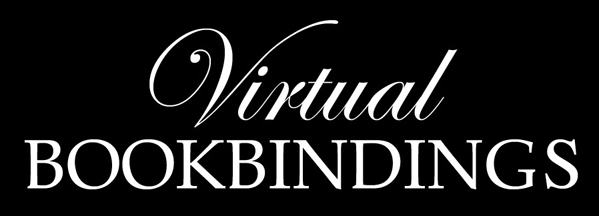

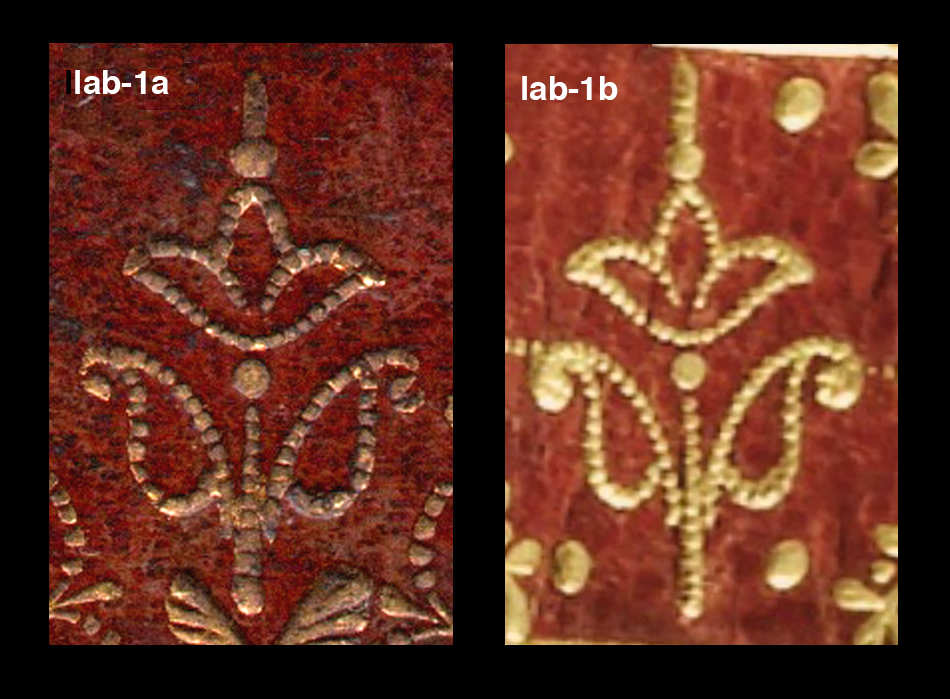
| On this page I want to look at the next important tool from our 1696 Breviary, Now that we have some very good scanned examples, I wanted to find some comparative examples from other proven Boyet bindings. This is not so easy, as finding published examples that can be enlarged to 1200 dpi are difficult to find. When I did finally find something it was not exactly the same. From our previous page we know that we are dealing with a Boyet binding, and the example that I found is from another obvious Boyet that appeared in Sotheby's Auction in December of 2015. |
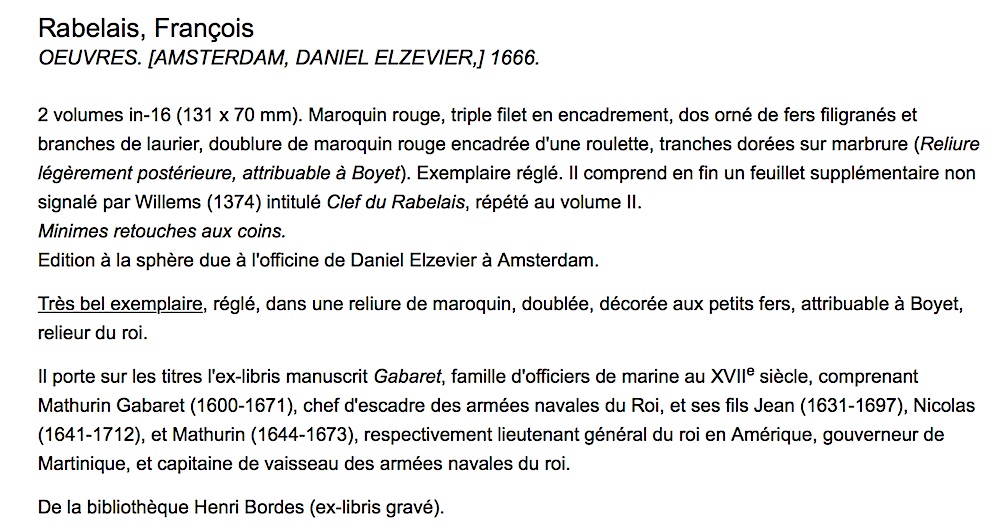
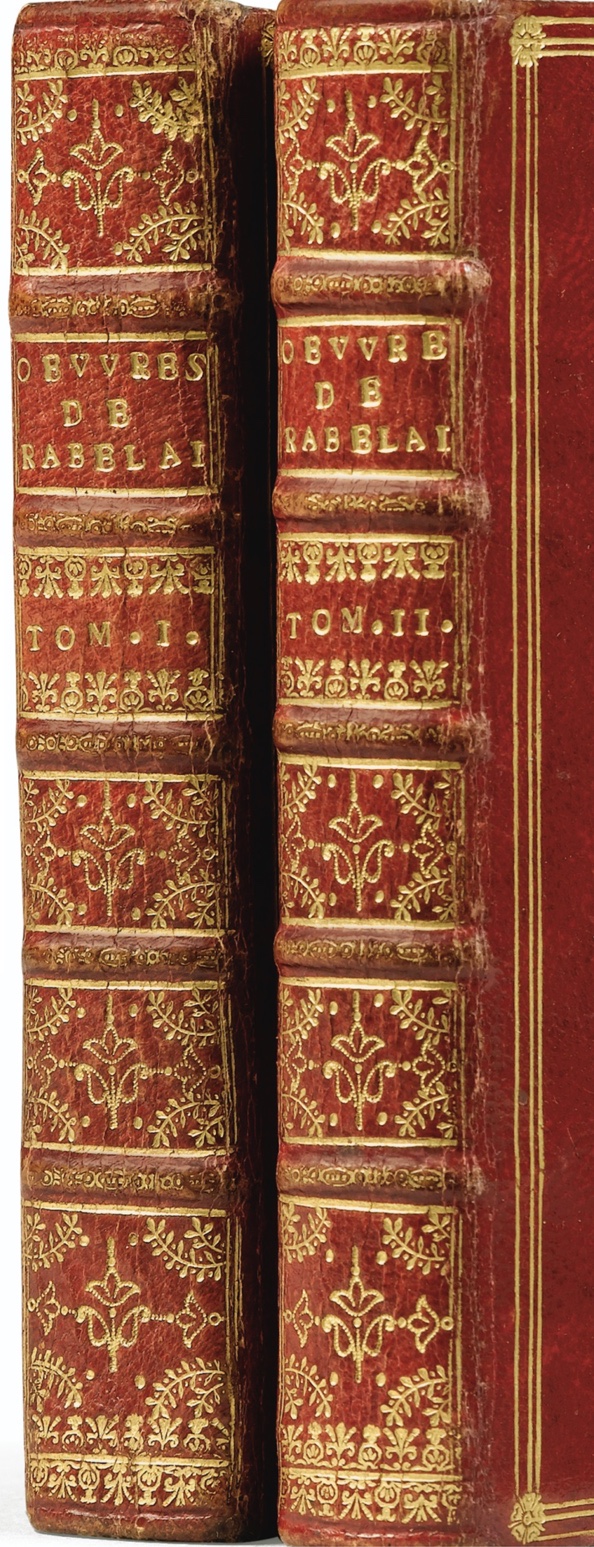
| Although this binding is very small, Sotheby's enlargement of it allows one to see the details clearly. They give the exact size of the books so we can simply adjust the size of the enlarged image to arrive at a very close approximation of the actual size even though there is some angular distortion of width. In Comparative Diagram 1, I show the result of this exercise to produce the central fleuron from the spine compartments of these Rabelais compared with our 1696 example. To the unaided eye these two fleurons are identical, however on closer examination we see some differences, differences that could almost be the result of wear and tear. However a closer examination shows that this is not the same tool and I have named it lab-1b |
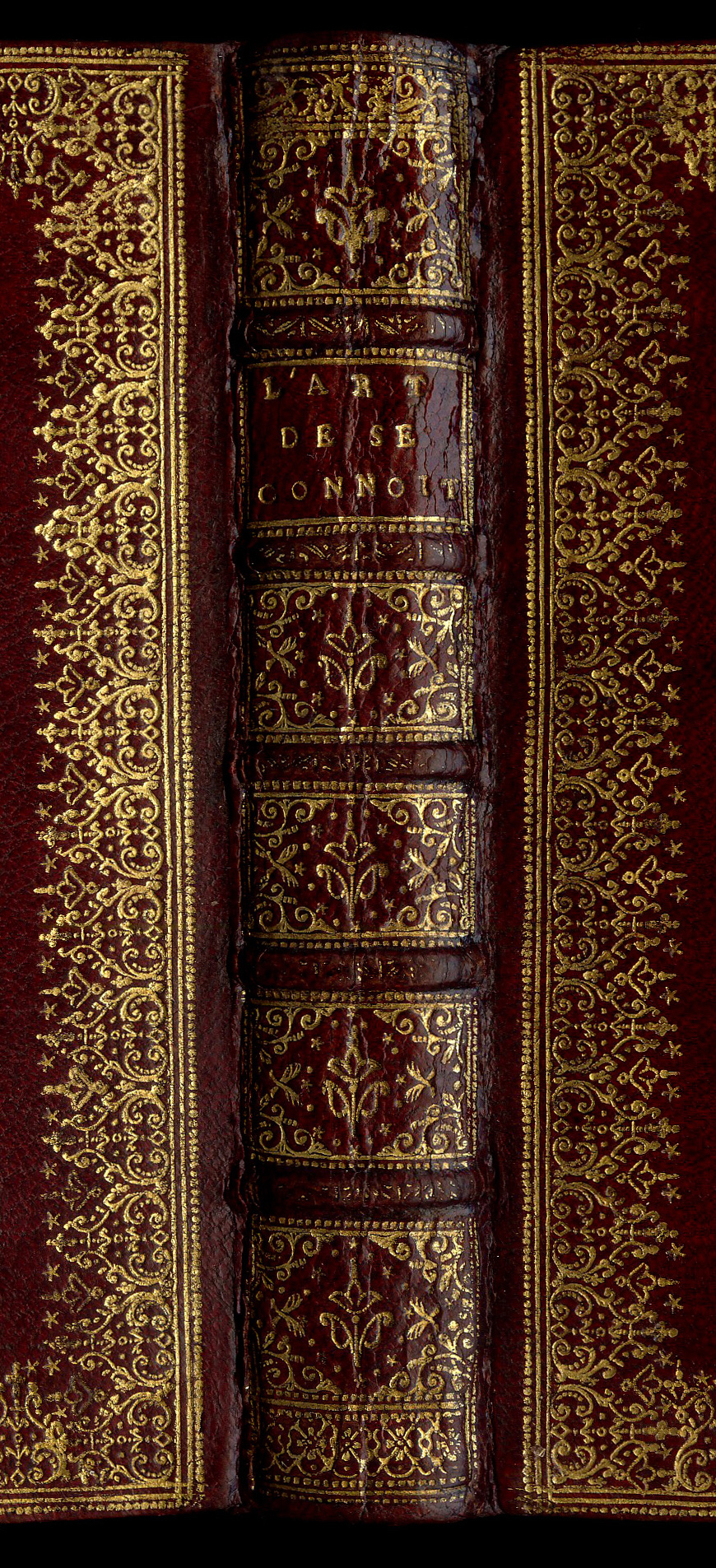
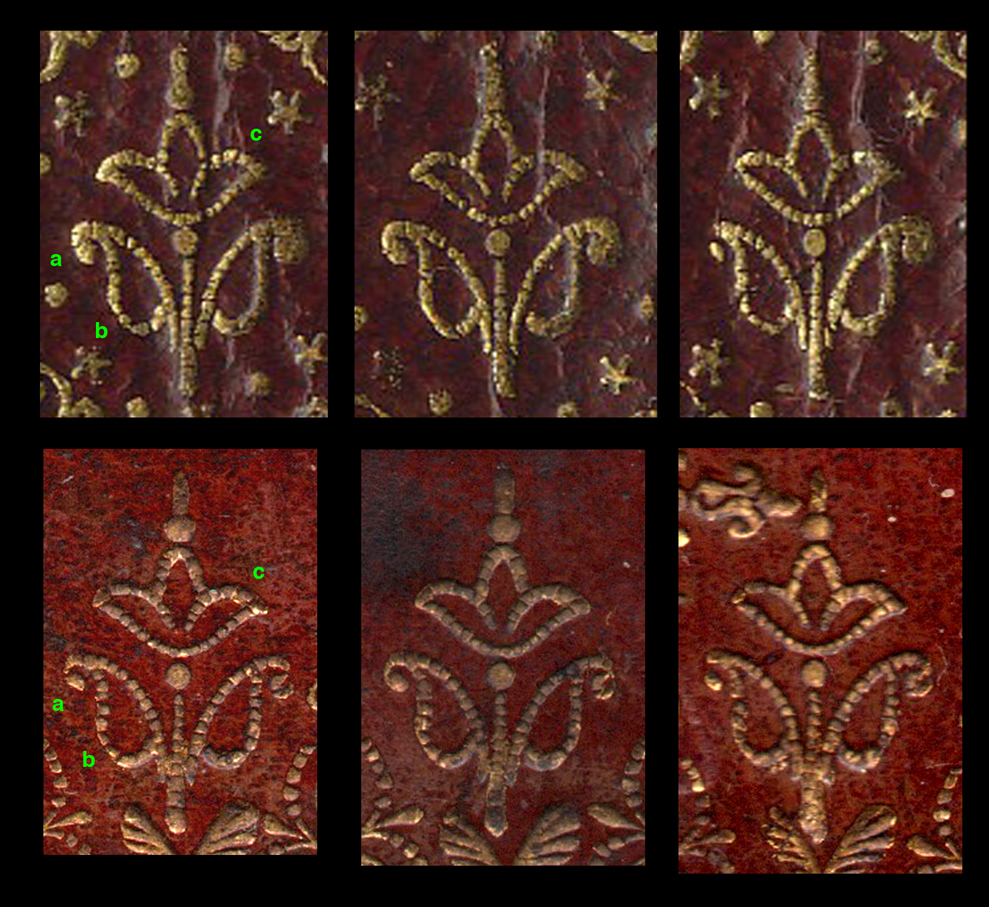
| Then I decided to test another Boyet binding that is similar to the Rabelais, a 1700 Boyet binding that I have detailed on a previous page. This was a lucky choice as the 1700 lab-1a imprints revealed a few details by which we can identify this classic tool. I have pointed these out in Comparative Diagram 2. The green letter "a" is shown on the side of the imprint next to incurved end of the leaf that terminates in a ball. This ball is significantly smaller than that of the leaf opposite. At point "b" the beading appears to narrow and is somewhat angular however the point to note is that this leaf is generally larger than its opposite. This effect is more noticeable due to the thickness of the beads at the bottom of the opposite leaf. The thickness of the beading at point "c" is also different from that of the opposite site which is thinner. All of these differences will be hard to observe if the gold tooling has been heavy handed or applied to a leather with more grain. Mysteriously the imprints from the Ravelais are also thick in the same areas. |
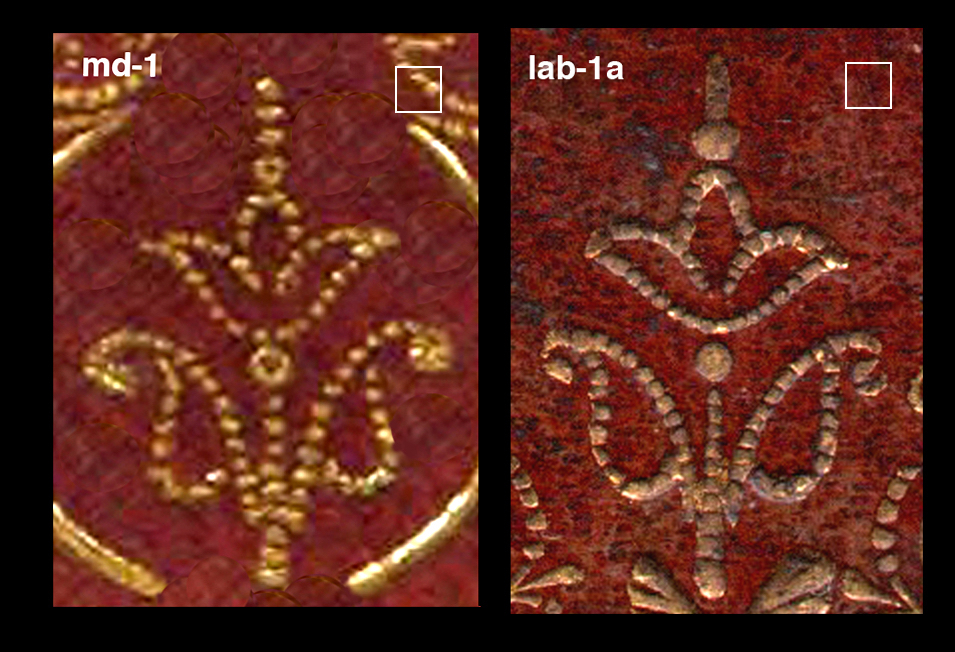
| As I mentioned on the last page the importance of these Boyet tools, is in their relation to the work of the great decorative giants of 17th century France, particularly Mace Ruette and le Maitre Doreur. The pointille explosion that started in the second quarter of the 17th century, can be attributed to the works of these master bookbinder and decorators. However in the collection of the Maitre Doreur's specialized pointille tools we find one that Mace Ruette did not have. This was a sort of often used signature tool, I named it md-1. In Comparative Diagram 3, I show the md-1 compared with Boyet's lab-1a, these imprints are shown at the same scale and are very similar in size and form. |
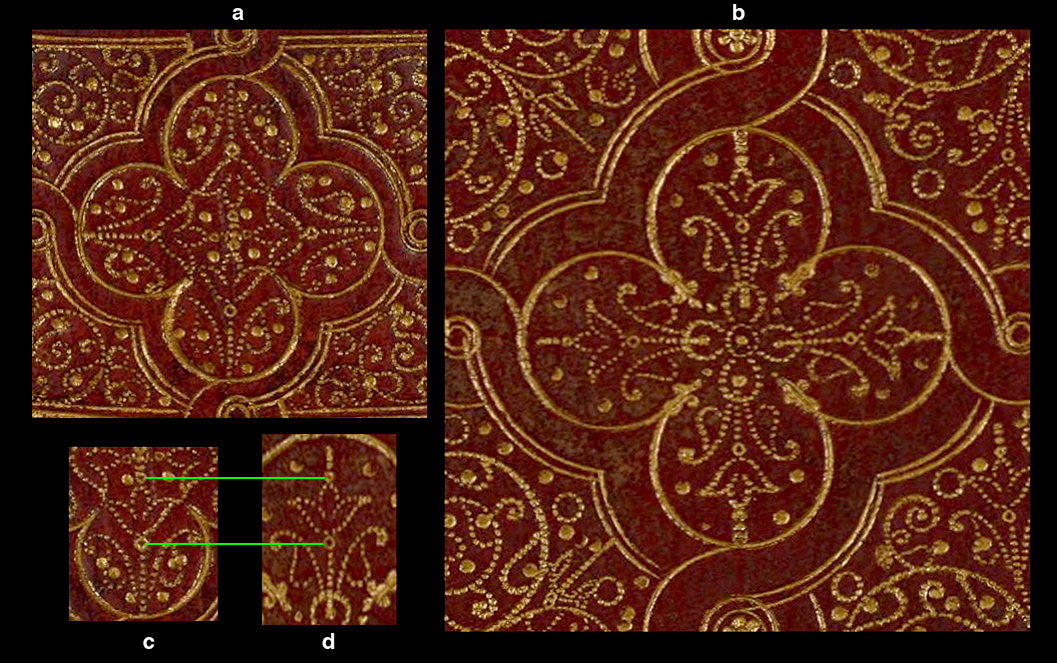
| In Comparative Diagram 4, I show some enlargements of a Maitre Doreur binding that can be found in the BnF online collection Officium beatae Mariae Virginis. Anvers: J. Meursius, 1622. I show this collection to emphasize the importance of the md-1 imprint, the first detail "a" comes from the spine of this BnF example, and "b" from the boards. These arrangements produce the optical illusion that the md-1 imprints are smaller in the "a" detail than in the "b" detail. However the green lines between "c" and "d" show that the imprints are the same size |
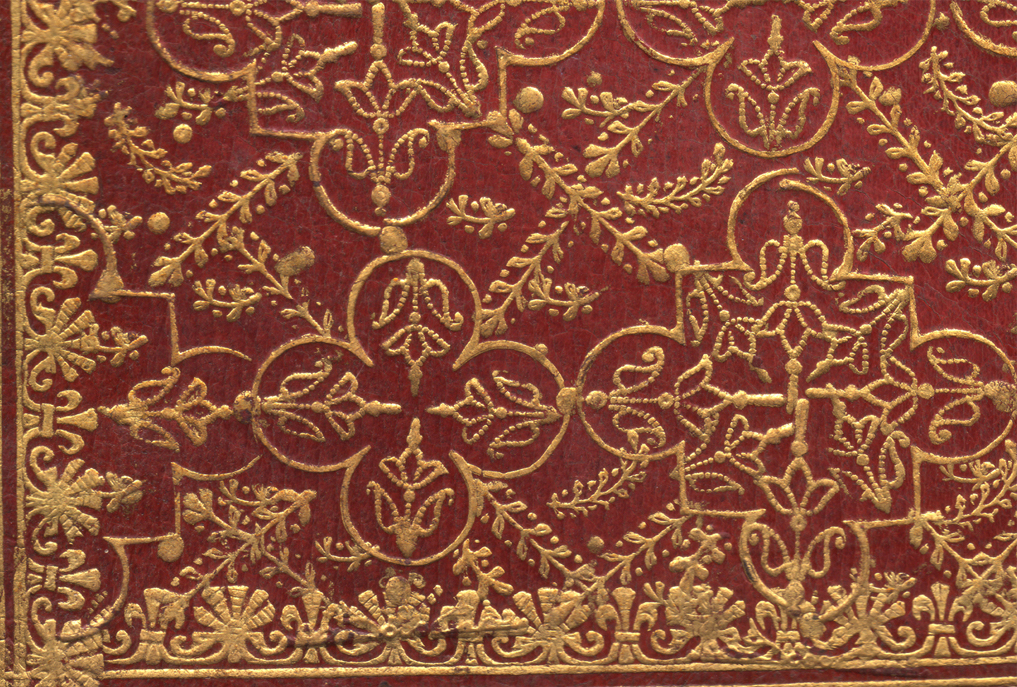
| Boyet was clearly a fan of pointille tools and designs. In Comparative Diagram 5, I show a detail from a doublure from a binding detailed on another page. Here we see yet more forms of this same type of tool placed in the same sort of arrangements that the Maitre Doreur was using more that half a century before. I have placed the collection of these lab-1 types in the diagram below, probably there are a few more to add to this group. |
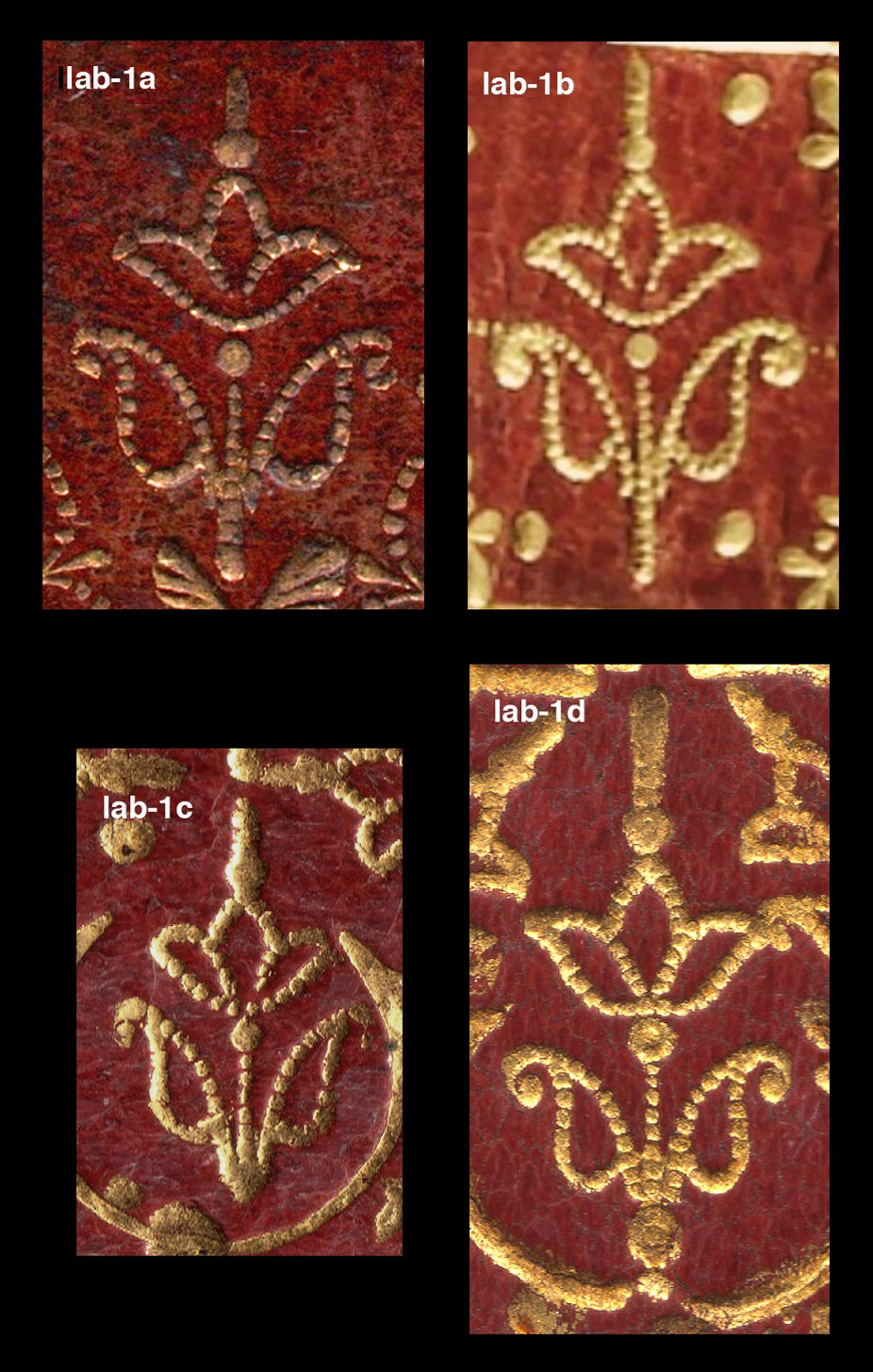
| To finish this lengthy page I wanted to show the Florimond Badier tool of this same type. It appears as though Badier copied the tools and methods of the Maitre Doreur to produce similar bindings some time later, his example of this tool is even closer to the Boyet model lab-1a. Below I show a blurry collection of enlarged Badier fb-1 imprints. |
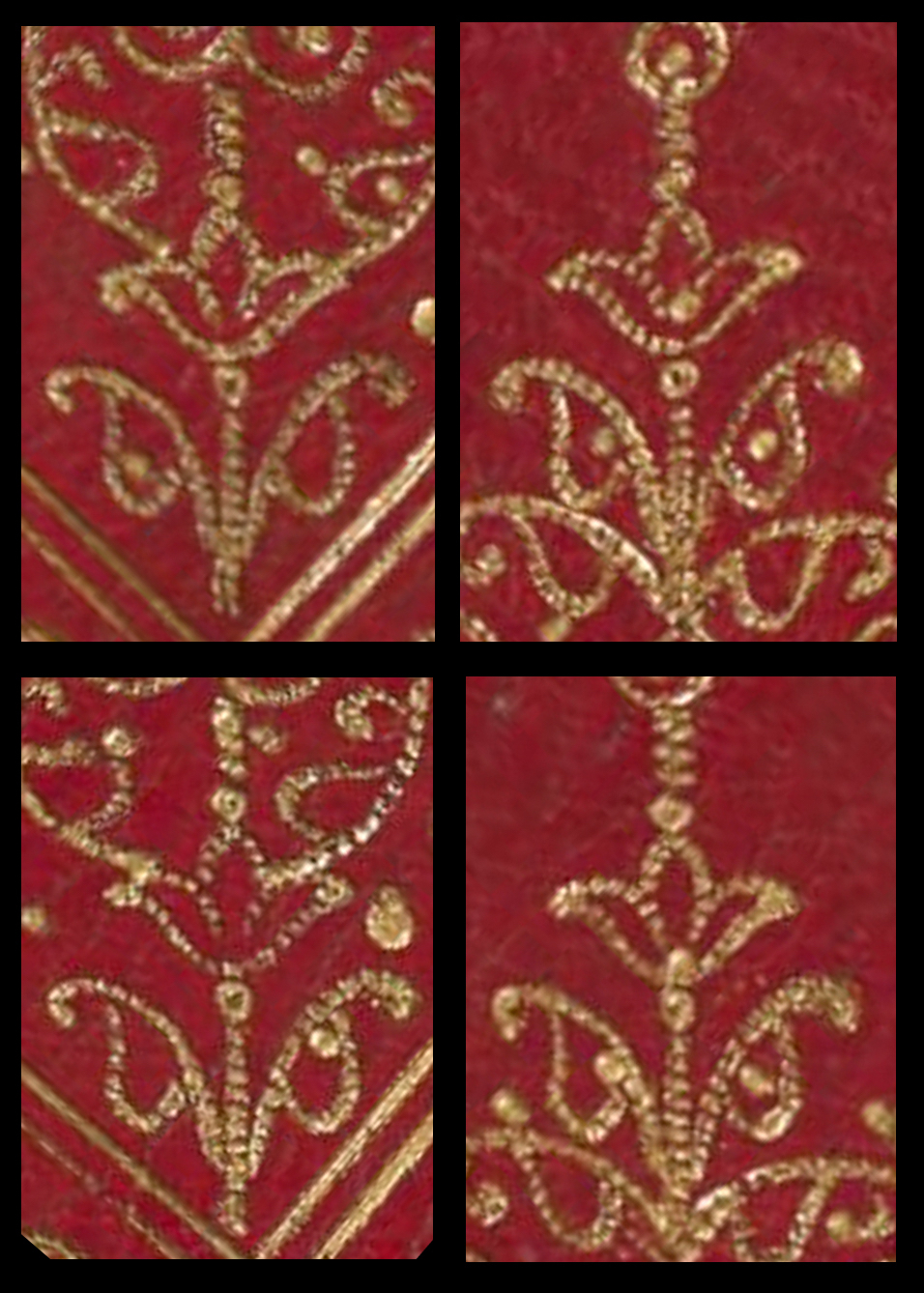
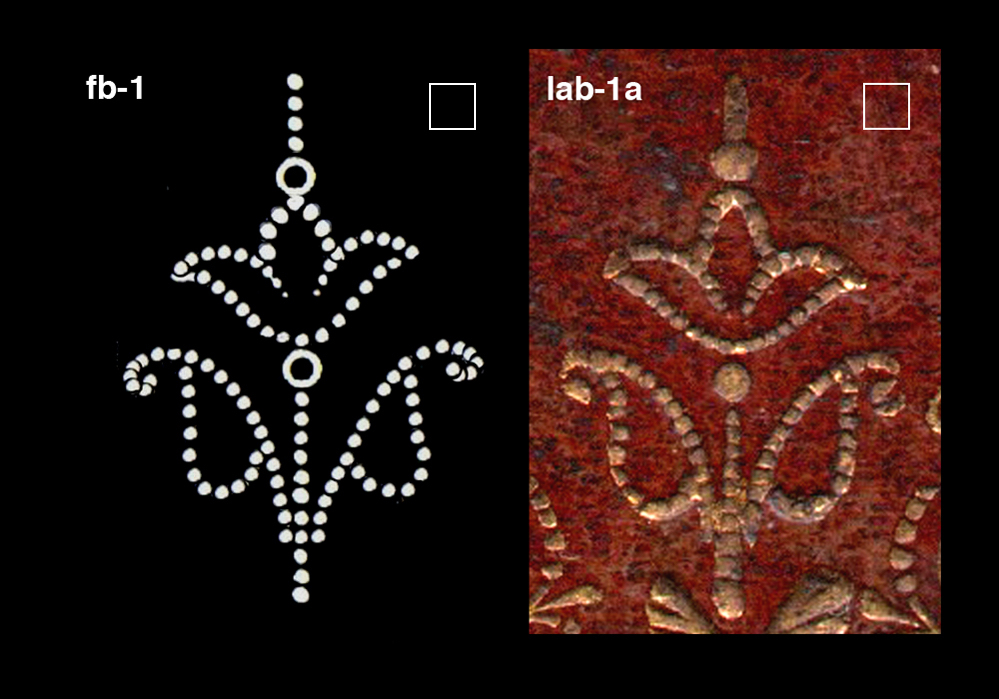
| It was nearly impossible to get good high resolution imprints of Badier's tools when I was working on his bindings, now more than 10 years ago. After some experimentation, I devised a method to produce type models that were very close to the original imprints. My method of doing this was to create a small bead that was more or less the average size of the pointille bead of the imprint I was working with. Then using a transparent overlay I placed a bead over the actual beads that were only messy blurs after enlargement. In Comparative Diagram 8, I show the Badier bead model fb-1 compared with our Boyet lab-1a. Probably someone will make the mistake of thinking this is a bead model of the lab-1a, they are that close. Certainly there is little doubt that Boyet's lab-1a tool was deliberate imitation of the md-1, fb-1 pointille models. |
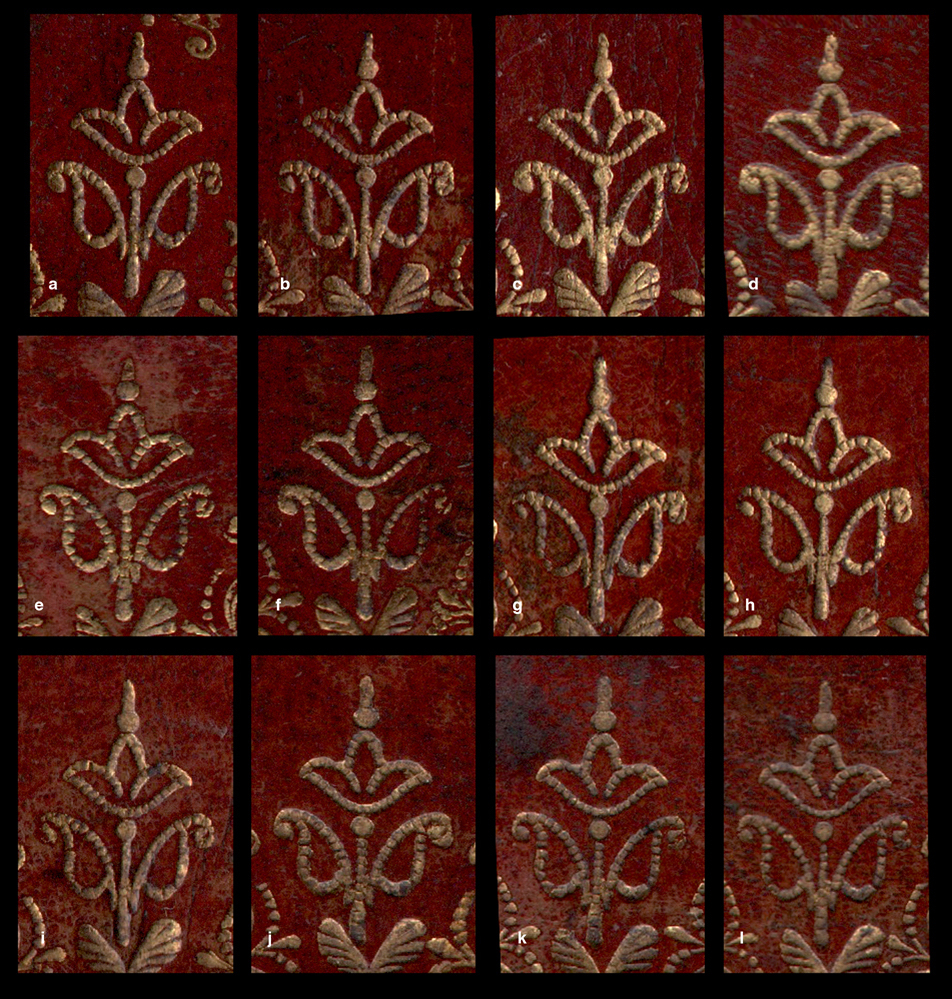
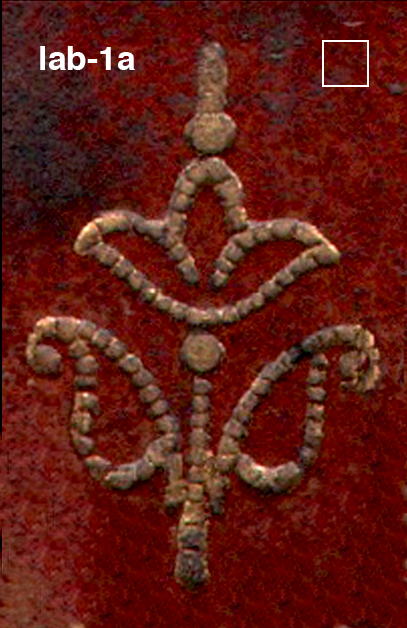
|
In Comparative Diagram 9, I show an assortment of the best lab-1a examples from the 1696 Breviary, as you can see, there is not one that is complete and perfect. Therefore I have had to make a partial reconstruction (shown above) of this imprint to arrive at something that might stand as a type model for this imprint. Even so we do not see clearly this tool, I suspect that the uppermost part was cut to produce three beads above the larger top/crown bead/ring (should have or could have been a ring). Study carefully all the examples in the enlargement to try to discover the original shape of this tool, which appears now somewhat worn. Example "d" is very interesting. as it is heavily laden with gold, and details appear in this example that do not show up in the others, especially the top beads. On the next page we will examine the third dentelle element from our 1696 Breviary. |
|
click here to return to the INDEX of new (2017) pages. see below links to previous work |
| Even experts are sometimes wrong, before you spend thousands on a book, please do your own research! Just because I say a certain binding can be attributed to le Maitre isn't any kind of guarantee, don't take my word for it, go a step further and get your own proof. In these pages I have provided you with a way of doing just that. |
| Virtual Bookings, created by L. A. Miller | return to the Home page of VIRTUAL BOOKBINDINGS |